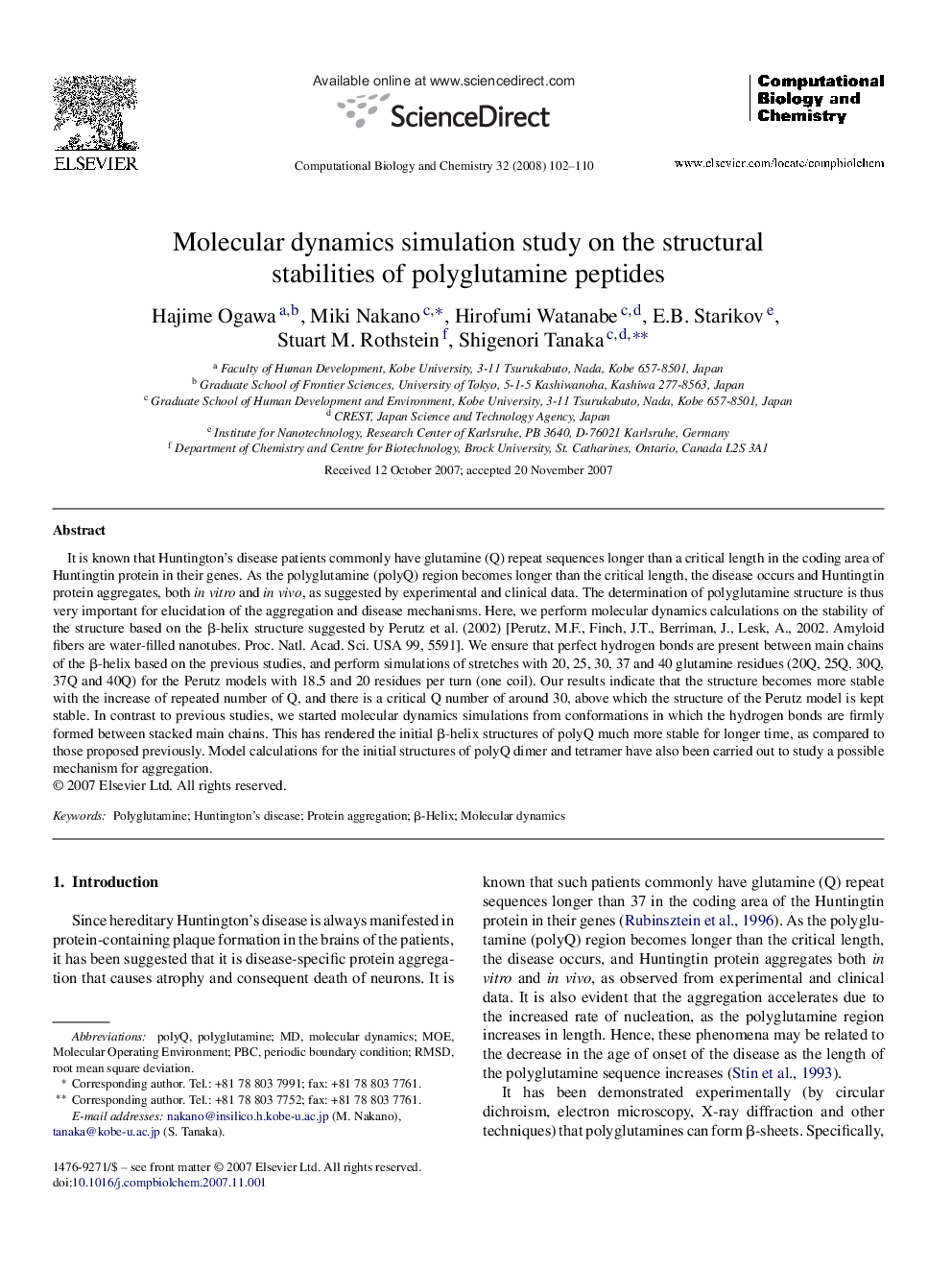| Article ID | Journal | Published Year | Pages | File Type |
|---|---|---|---|---|
| 15389 | Computational Biology and Chemistry | 2008 | 9 Pages |
It is known that Huntington's disease patients commonly have glutamine (Q) repeat sequences longer than a critical length in the coding area of Huntingtin protein in their genes. As the polyglutamine (polyQ) region becomes longer than the critical length, the disease occurs and Huntingtin protein aggregates, both in vitro and in vivo, as suggested by experimental and clinical data. The determination of polyglutamine structure is thus very important for elucidation of the aggregation and disease mechanisms. Here, we perform molecular dynamics calculations on the stability of the structure based on the β-helix structure suggested by Perutz et al. (2002) [Perutz, M.F., Finch, J.T., Berriman, J., Lesk, A., 2002. Amyloid fibers are water-filled nanotubes. Proc. Natl. Acad. Sci. USA 99, 5591]. We ensure that perfect hydrogen bonds are present between main chains of the β-helix based on the previous studies, and perform simulations of stretches with 20, 25, 30, 37 and 40 glutamine residues (20Q, 25Q, 30Q, 37Q and 40Q) for the Perutz models with 18.5 and 20 residues per turn (one coil). Our results indicate that the structure becomes more stable with the increase of repeated number of Q, and there is a critical Q number of around 30, above which the structure of the Perutz model is kept stable. In contrast to previous studies, we started molecular dynamics simulations from conformations in which the hydrogen bonds are firmly formed between stacked main chains. This has rendered the initial β-helix structures of polyQ much more stable for longer time, as compared to those proposed previously. Model calculations for the initial structures of polyQ dimer and tetramer have also been carried out to study a possible mechanism for aggregation.
